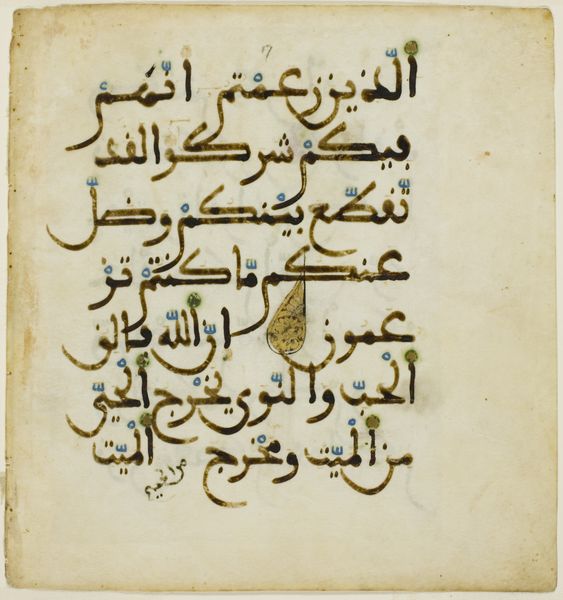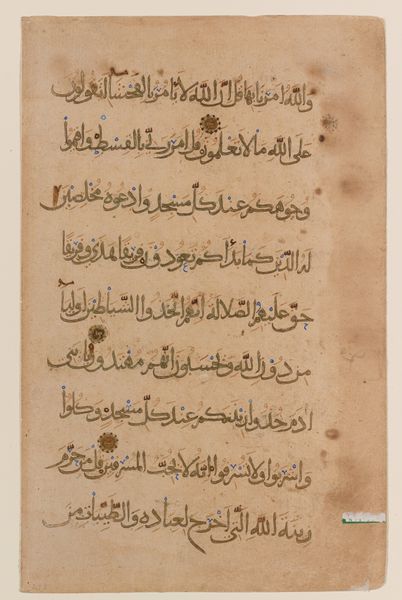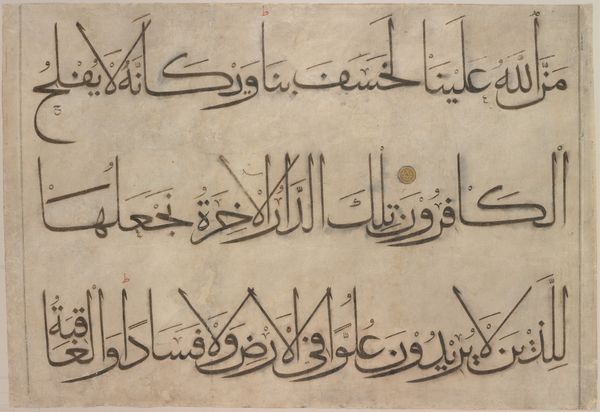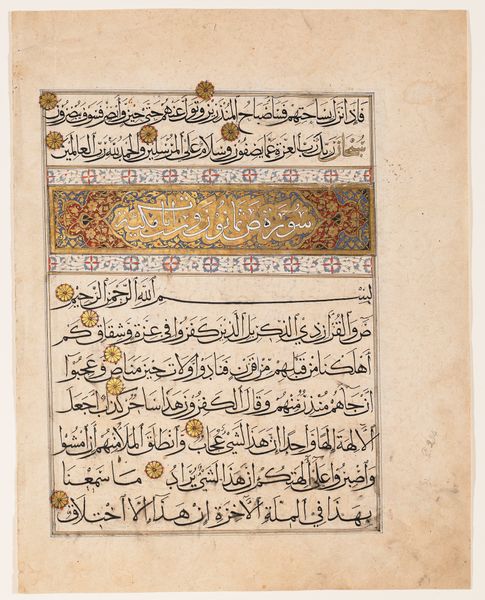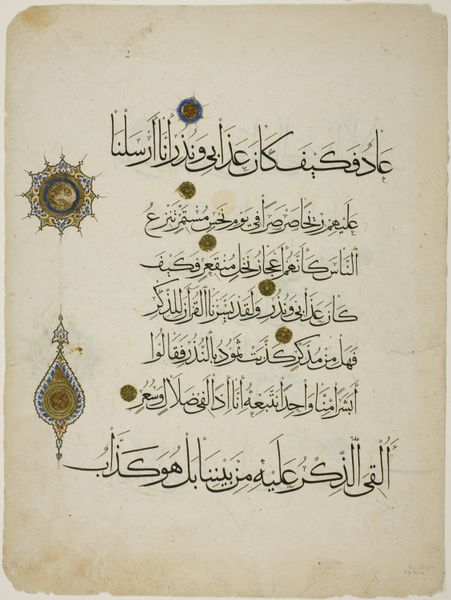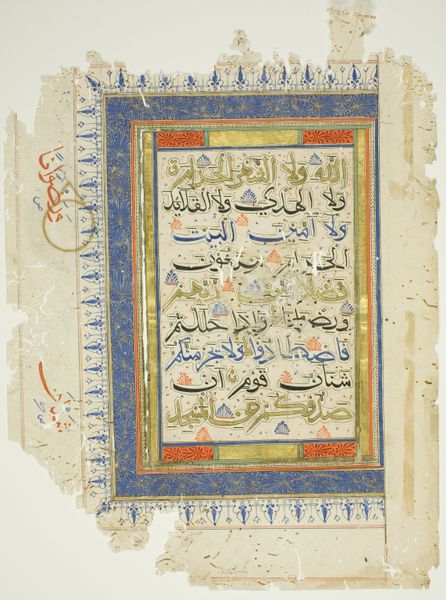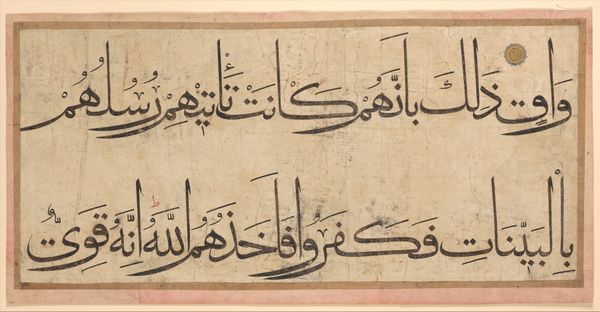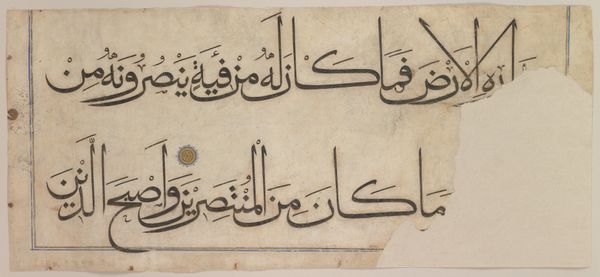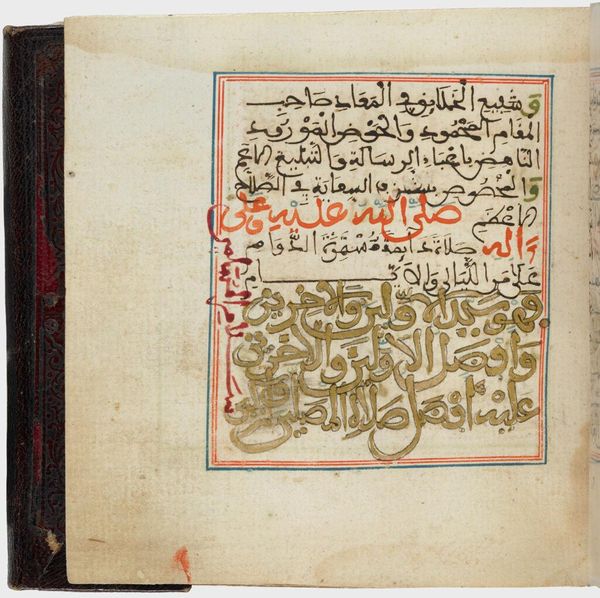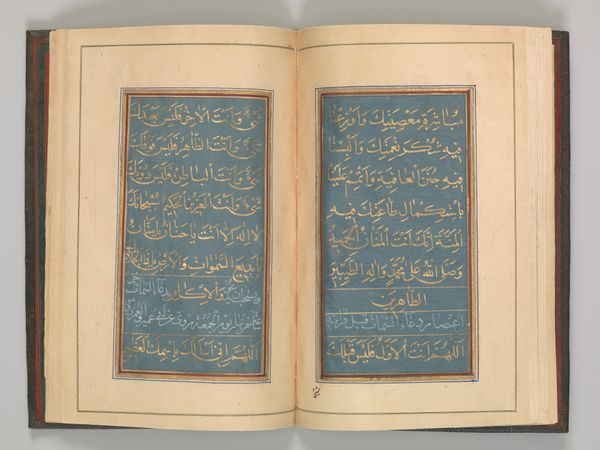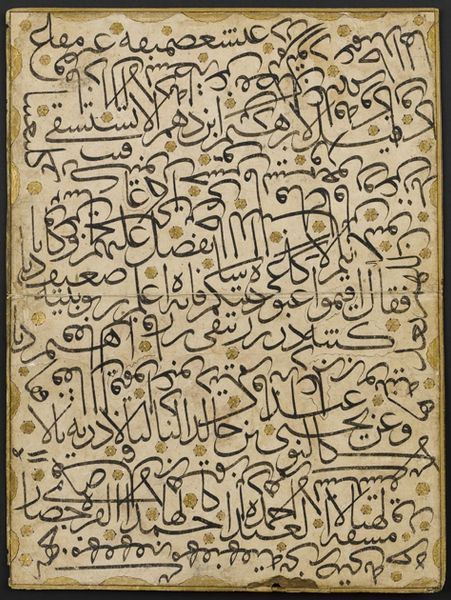
Qur'anic Compilation Page 1345 - 1395
0:00
0:00
drawing, paper, ink
#
drawing
#
paper
#
ink
#
islamic-art
#
calligraphy
Dimensions: Text block: H. 14 7/16 in. (36.7 in.) W. 10 1/2 in. (26.7 cm) Full page: H. 16 15/16 in. (43 cm) W. 13 3/4 in. (35 cm)
Copyright: Public Domain
Editor: So this is a Qur'anic Compilation Page made between 1345 and 1395, in ink, drawing and paper. It seems that the artist is Abu Muhammad 'Abd al-Qayyum ibn Muhammad ibn Karamshah al-Tabrizi. Looking at this, the evenness and deliberate spacing of the calligraphy strike me as a strong visual expression of order. What do you see in this piece, considering its historical context? Curator: As a historian, I’m immediately drawn to how this page reflects the intersection of religious belief and political power. The art of calligraphy, especially within Qur'anic texts, was incredibly important for Islamic rulers. Consider the institutions that supported its production. Who was commissioning this work, and what message were they hoping to convey through its beauty and precision? Editor: That’s fascinating. So, this wasn't just religious art; it also played a role in projecting authority and influence? Curator: Precisely! Calligraphy in this context was almost always supported by wealthy patrons. Think about the workshops and artists involved in creating these pages. This also reminds us that religious texts were part of a broader network of social and political interactions. How do you think access to these texts may have impacted people at the time? Editor: It sounds like such art was a status symbol but also maybe could have led to elitism when many couldn’t access them! This certainly adds another layer of complexity to my initial impression. Curator: Indeed! Reflecting on it together, it reveals how aesthetics, power, and access intertwined within the historical contexts of Islamic art. Editor: I see it differently now. Thanks for helping me think about it in a new light.
Comments
No comments
Be the first to comment and join the conversation on the ultimate creative platform.
